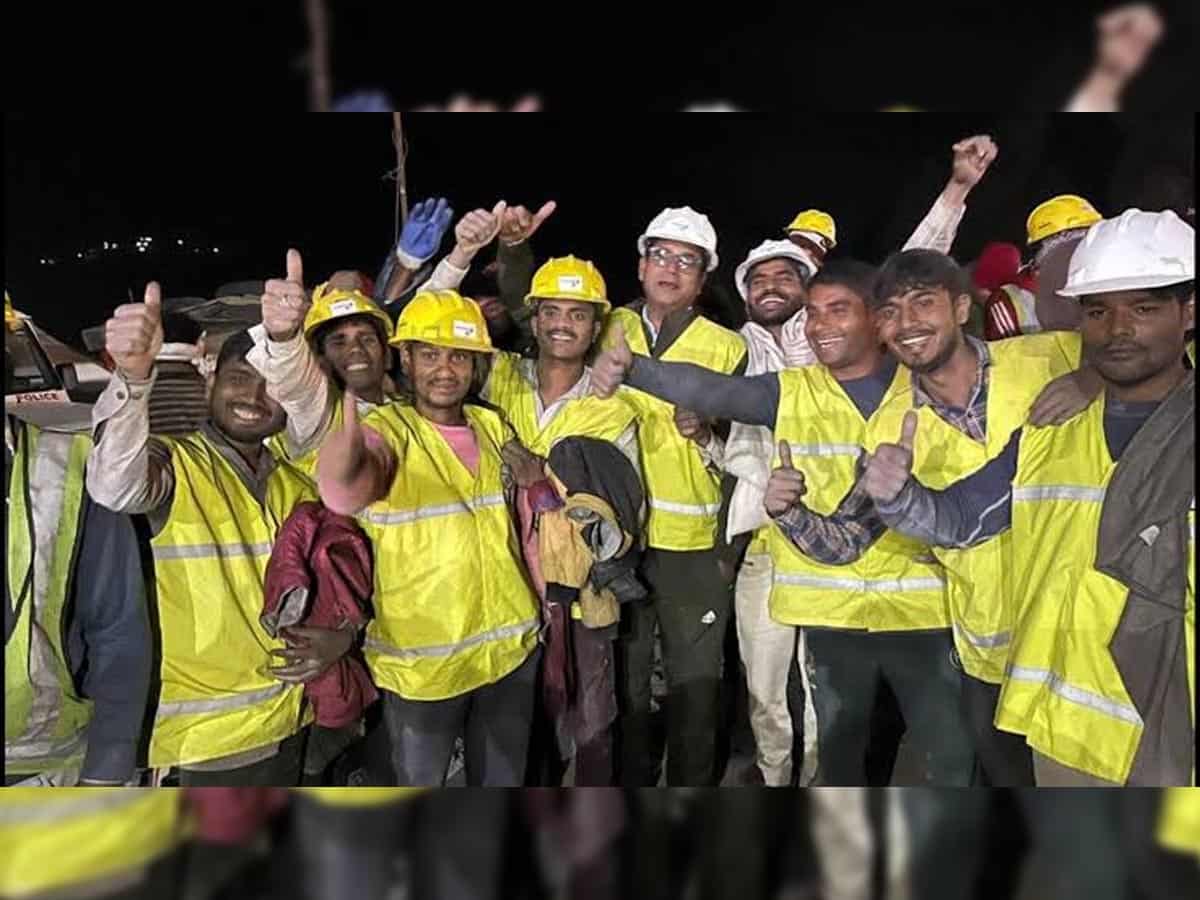
Ultimately, human determination, daring and ingenuity succeeded where powerful machines had failed. Forty one workers trapped in the Silkyara tunnel are alive today because of the bravery of a dozen heroes who entered the tunnel and brought them out. The trapped workers are once again breathing fresh air and seeing bright sunshine thanks to the determination of their fellow labourers who understood their pain.
The nation today is saluting the rescuers.
Who were these courageous men? The leader is 45-year-old Wakeel Hassan who has worked in “rat hole mining” for many years and acquired experience of laying pipelines in difficult situations.
The other team members are Feroze Qureshi, Munna Qureshi, Rashid Ansari, Irshad Ansari, Naseem Malik, Monu Kumar, Nasir Khan, Ankur, Jatin Kumar, Devender Kumar and Saurabh. They have become the heroes of India. When the sophisticated, expensive and powerful auger machine had failed to carry out the rescue, hopes began fading.
It was then that a decision was made to rope in a team of rat-hole miners from Rockwell Company. That decision proved to be the winning gambit. In a matter of a few hours the intrepid men burrowing through extremely narrow passages, made a pathway to reach the trapped workers and brought them out one by one. It was like a miracle. The engineers of the Indian army and Australian expert Arnold Dix also provided their inputs to bring off the great escape for the workers.
What is rat-hole mining?
Rat-hole mining refers to the practice of extracting coal from hillsides by digging holes that are very narrow and unsafe. The practice is most often found in Meghalaya. There, due to the difficult terrain and loose soil, large machines cannot be set up to do the job. Hence it has to be done by human hands and the people who do it are contract labourers who are very poorly paid.
The equipment they use are pickaxes and baskets to pull out the coal manually. Because the pits are so narrow, they are called rat holes and the term that is used for this task is rat hole mining. The mines are hazardous places to work in. They are unregulated, lack safety measures, and have very poor ventilation. As such they work in extremely risky conditions. But the poor workers risk their lives daily to work in these mines.
Rat-hole mining also harms the environment. In 2014 the National Green Tribunal deemed rat hole mining as illegal and banned it. However, the practice continues unabated in the northeastern states. The Manipur government has even challenged the ban in court saying that no other method of mining is possible in the hills.
They approached the task with confidence
But now these miners have done the unbelievable. Once again they risked their lives by digging narrow tunnels. At any moment the soil could have caved in over their heads. But these plucky miners do it every day so they approach the task with confidence.
They pulled out the earth with simple tools like buckets and covered their noses with wet towels to prevent dust from entering their nostrils. In a matter of a few hours, they brought out the people who were trapped for more than two weeks.
Fulfilled a promise to his son
Munna Qureshi was the first to break through and make contact with the trapped workers. They had tears in their eyes when they saw Munna. Before undertaking the mission, the rat-hole miner had made a promise to his ten-year-old son that he would not return home until he brought out every trapped worker. That day he fulfilled his promise to his son.
When the heroes were asked what they wanted as a reward, their requests were simple. But the most profound appeal came from Mohammed Irshad. “I wish that every person should be treated like a human being and there should be love throughout our country,” he said. Like all true heroes, they are simple men with simple desires but have great ideas in mind.



